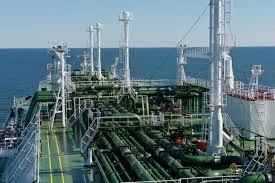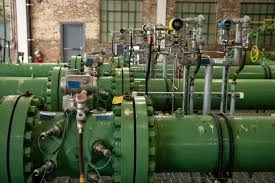After nearly a decade of dormancy, one of the Northeast’s most controversial energy projects is back in the spotlight. The Constitution Pipeline, a proposed 135-mile natural gas conduit from Pennsylvania’s Marcellus Shale to upstate New York, is once again under review — reigniting debate over the region’s energy future, environmental priorities, and winter heating costs.
A Project Once Declared Dead
First proposed by Williams Companies, the pipeline would deliver up to 650,000 dekatherms a day to markets in New York and New England. Supporters contended it would lower energy costs, enhance reliability, and provide a cleaner alternative to heating oil.
The plan won federal approval but saw the project implode in 2016 when New York State denied a critical water quality permit, citing environmental concerns. That decision became a landmark victory for environmental advocates and a warning for other developers who face state-level opposition. Williams ultimately stopped construction, and for years, the Constitution Pipeline seemed relegated to history.
Why It’s Back
In early 2025, Williams resubmitted permit applications to both state and federal regulators, reviving discussions around the project. The move coincides with growing concerns about energy reliability and winter price spikes in the U.S. Northeast — a region that, despite its proximity to major gas reserves, often pays among the highest energy prices in the country.
The company argues that the pipeline could help stabilize gas supply, lower consumer costs, and reduce emissions by encouraging a shift away from heating oil. According to a new S&P Global analysis, construction of the pipeline could yield as much as $11.6 billion in total energy savings for consumers over a 15-year period.
Economic Case and Energy Impact
The S&P Global report estimates that the Constitution Pipeline could:
Support nearly 2,000 jobs annually (direct, indirect, and induced) over the contract period
Add $4.4 billion to gross state product (GSP) across Connecticut, Massachusetts, New York, and Rhode Island.
Generate $432 million in federal and state tax revenues.
Local gas prices could decrease by up to 6% during peak demand months, smoothing out seasonal price spikes.
“Constitution Pipeline would bring much-needed capacity to the U.S. Northeast,” said Ed Kelly, executive director of North America Gas & LNG Consulting at S&P Global. He cited that the region experiences extreme winter price spikes roughly once every five years – with prices reaching as high as 36 times of the annual average on peak days. Avoiding just one such event, the report suggests, could justify the entire project cost.
Environmental and Community Opposition
Opponents are undeterred. Environmental groups say new fossil fuel infrastructure runs counter to state climate goals, threatens water pollution, and extends the use of natural gas. Residents in communities along the route continue to express concerns about eminent domain, disruption of ecosystems, and the possibility of leaks.
Advocates counter that increased gas deliverability would actually reduce regional emissions by replacing more carbon-intensive heating oil, which emits roughly 28 percent more greenhouse gases than natural gas. The issue speaks to a larger policy tension: how to balance near-term energy security with long-term climate commitments.

An Uncertain Future
Even with renewed momentum, the project’s future is still uncertain. Williams still needs key state environmental approvals, and its progress will likely be met with legal challenges. The most optimistic projections peg the start of construction for late 2027-but that’s anything but a sure thing.
For now, the Constitution Pipeline is a case study in the broader U.S. energy transition — where questions of cost, climate, and infrastructure collide. Whether it finally gets built or not may depend less on engineering than on evolving political and environmental realities.
While the Constitution Pipeline remains under debate, Texas’ Eiger Express Pipeline is set to begin construction, with developers reaching final investment decision (FID) in August 2025, while Glenfarne’s Alaska LNG project continues to advance, Baker Hughes agreed on November 10, 2025, to supply key equipment for the development.
Constitution Pipeline Project Factsheet
Overview of Project
Developer: Williams Companies
Status: Under review (permit resubmitted early 2025)
Original Proposal: 2014, Federal approval granted, stopped 2016
Technical Specifications
Length: 135 miles
Route: Susquehanna County, PA → Schoharie County, NY
Capacity: 650,000 dekatherms/day
Purpose: To deliver Marcellus Shale natural gas to Northeast markets
Economic Projections: 15 Year Period
Consumer Savings: $11.6 billion (S&P Global estimate)
Jobs: 2,000 annually (direct, indirect, induced)
Economic Output: $4.4 billion added to regional GSP
Tax Revenue: $432 million (federal + state)
Price Impact: Up to 6% reduction during peak winter demand
Key Timeline
2014-2016: Initial permitting and federal approval
2016: NY State water quality permit denied; project halted
2025: Permit applications resubmitted
2027+: Construction could start (subject to approval)
Constitution Pipeline: Current Debate
Proponents argue:
Improved energy reliability and supply stability
Lower heating costs for consumers
Emissions reduction vs. heating oil (28% less CO₂)
Regional energy security
Opponents say:
Climate goal conflicts (new fossil fuel infrastructure)
Water quality and ecosystem risks
Eminent domain concerns
Long-term carbon lock-in
Regulatory Hurdles
NY State environmental permits (key barrier)
Federal agency reviews
Expected legal challenges
Uncertain approval timeline

